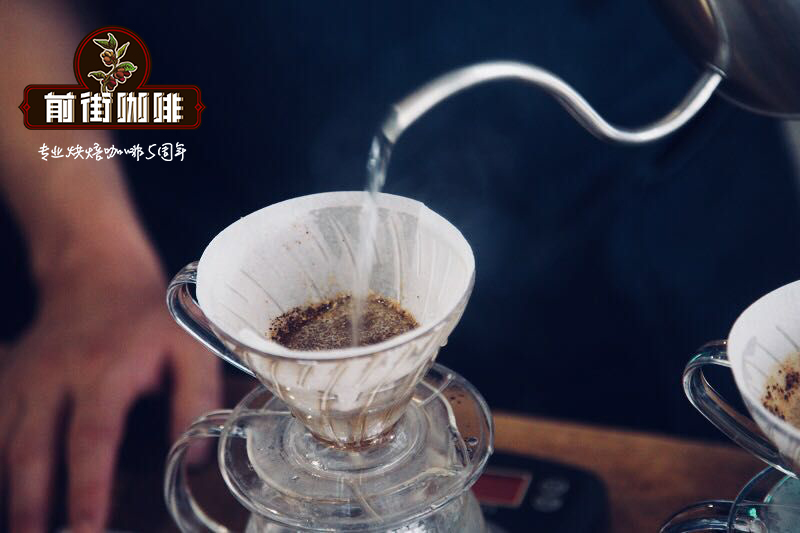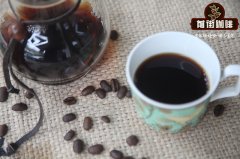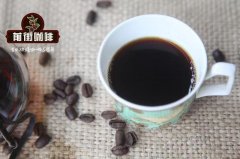The characteristics of Sumatran Coffee the story of Sumatran coffee beans introduction to Sumatran Coffee producing areas

Professional coffee knowledge exchange more coffee bean information please follow the coffee workshop (Wechat official account cafe_style)
Sumatran specialty coffee
Indonesia was named the Portrait country of the year by SCA, attracting a lot of attention to this unique coffee country, as a matter of course. The combination of rich tropical microclimate and semi-washing treatment makes Indonesia, especially Sumatra, stand out.
Indonesian flavor
In particular, Sumatra's specialty coffee has its own characteristics. Provides a complex and full-bodied flavor. A typical semi-washed Sumatra reveals the creamy body and the taste of dark chocolate, licorice root and lemon. It can be used as a supplement to mixed coffee, or it can exist independently.
History of Sumatran Coffee
Coffee was introduced by Vereenigde Oost-Indische Compagnie (Dutch East India Trading Company) in the early 17th century. Dutch colonists planted Typica and bourbon varieties in North Sumatra to meet the growing demand for coffee in Europe. Today, Indonesia is the world's third largest coffee producer, and they have a passionate professional coffee community.
Coffee farmers in Sumatra
There are about 40,000 small coffee farmers in Sumatra, all of whom own less than 2 hectares of land. Coffee is grown by a small family of 60 and 130 farmers. These organizations form cooperatives, led by a supervisor, who sell coffee to local exporters.
Downstream of the supply chain
Exporters and cooperatives such as Ketiara Cooperatives have established supply chains to ensure that coffee flows effectively from farms to the port of Belawan in Sumatra. At the beginning of the supply chain, you have small coffee farmers, most of whom own less than 2 hectares of land. These small farmers send their cherries to local collectors, who use temporary pulping equipment to process coffee.
After pulping, the wet parchment coffee is dried to a moisture level of about 30-35%, and then sent to cooperatives or local businessmen, who then dry the coffee. Dry, ungraded products, known locally as "Asalan", usually have 15 per cent moisture and 15 per cent diversion. Depending on the location of the partner company or exporter, Asalan grades and dries to 13% at Medan or local collection points before exporting through the port of Belawan.
Wet shelling treatment
Wet shelling, known locally as & # 39; Giling Basah & # 39, was introduced in the 1980s. They did this to imitate fully washed coffee from Central America, but to their surprise, they created a unique flavor. Wet and shelled, giving coffee a lot of body and strength.
Major coffee producing areas in Sumatra
In Sumatra, we work in two key areas: Aceh and North Sumatra. Aceh, located in the north of Sumatra, is an independent Sultanate. The province is governed by Islamic law, that is, sharia law. We work with many cooperatives that provide organic coffee and fair trade coffee.
In North Sumatra, southern Aceh, coffee is grown around Lake dopa, the largest volcanic lake in the world. We buy a lot of uncertified organic coffee from local producers because they breed better varieties than "Tim", the local name for East Timorese hybrid coffee.
Female-led
Ketiara cooperation
Twenty years ago, Chairman Rama began buying cherries and turning them into green coffee. At that time, she sold green coffee beans to local businessmen. At the end of 2008, she organized farmers to set up a cooperative, which was established in 2009 and has 38 members.
Now, Ketiara Cooperative has become one of the most famous coffee suppliers in Aceh, owning Ketiara Coffee. Surrounded by Keenong Le Yousse National Park, the cooperative has a total of 897 members and covers a total area of 836 hectares. All coffee grown by the Ketiara Cooperative is organic and fair trade.
Important Notice :
前街咖啡 FrontStreet Coffee has moved to new addredd:
FrontStreet Coffee Address: 315,Donghua East Road,GuangZhou
Tel:020 38364473
- Prev

Colombian coffee features taste Colombian coffee history Colombian coffee story of Colombian coffee
Professional coffee knowledge exchange more information about coffee beans Please follow Coffee Workshop (official Wechat account cafe_style) washed Arabica from Colombia today, Colombia is considered to be one of the most advanced specialty coffee producers in the world. Temperature, altitude, solar radiation and water availability all affect water quality, but soil is probably the most important component in Colombia because
- Next

Yega Chuefei Fruit Ding Coffee Bean Flavor Story characteristics Water-washed Yega Chevy Coffee Baking Curve sharing
Professional coffee knowledge exchange more coffee bean information Please follow the coffee workshop (Wechat official account cafe_style) Today the editor came to share the baking curve of washed Yejia sherbet fruit cubes. In order to show the personality of this bean, the Qianjie roaster baked three different curves for comparison. Diced fruit
Related
- Beginners will see the "Coffee pull flower" guide!
- What is the difference between ice blog purified milk and ordinary milk coffee?
- Why is the Philippines the largest producer of crops in Liberia?
- For coffee extraction, should the fine powder be retained?
- How does extracted espresso fill pressed powder? How much strength does it take to press the powder?
- How to make jasmine cold extract coffee? Is the jasmine + latte good?
- Will this little toy really make the coffee taste better? How does Lily Drip affect coffee extraction?
- Will the action of slapping the filter cup also affect coffee extraction?
- What's the difference between powder-to-water ratio and powder-to-liquid ratio?
- What is the Ethiopian local species? What does it have to do with Heirloom native species?

